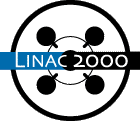
N. PHINNEY (SLAC)
The Stanford Linear Collider (SLC) was the first prototype of a new type of accelerator, the electron-positron linear collider. Many years of dedicated effort were required to understand the physics of this new technology and to develop the techniques for maximizing performance. Key issues were emittance dilution, stability, final beam optimization and background control. Precision, non-invasive diagnostics were required to measure and monitor the beams throughout the machine. Beam-based feedback systems were needed to stabilize energy, trajectory, intensity and the final beam size at the interaction point. A variety of new tuning techniques were developed to correct for residual optical or alignment errors. The final focus system underwent a series of refinements in order to deliver sub-micron size beams. It also took many iterations to understand the sources of backgrounds and develop the methods to control them. The benefit from this accumulated experience was seen in the performance of the SLC during its final run in 1997-98. The luminosity increased by a factor of three to 2.8 10**30 and the 350,000 Z data sample delivered was nearly double that from all previous runs combined.
Comments or Questions to
linac2000@slac.stanford.edu